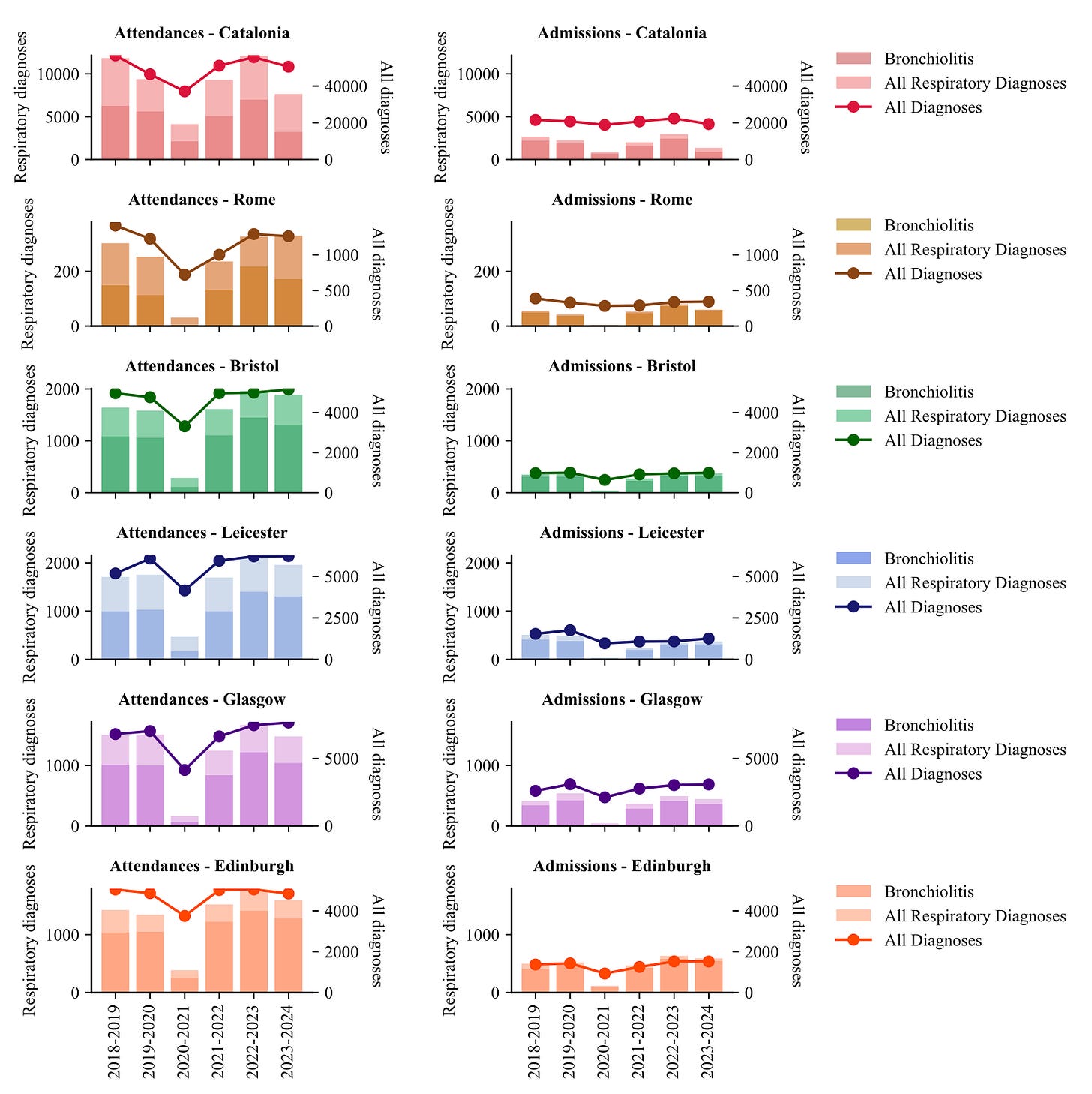Nirsevimab Really Works
Fewer RSV admissions in young infants? Yes, please.
In this wonderful era in which everyone seems so enthusiastic about vaccination – here’s another one that works: nirsevimab. I’ve written about this previously as just a single-country experience, but now we get to see a multi-center/multi-country longitudinal comparison to try and put its impact into context.
This is pretty much all the data in one graphic:
As you can readily see, the glorious distanced years of COVID well-represented by reductions in pediatric respiratory illness, followed by an immediate return to prior levels.
However, there is one outlier – Catalonia, the region where nirsevimab demonstrated wide uptake among newborns and infants aged less than 6 months of age. Rather than remaining steady, along with the rest of the sampled healthcare systems, Catalonia dips down profoundly with respect to bronchiolitis visits and admissions. These dips are primarily the consequence of a halved risk for admission in young infants, those at highest risk for the poorest outcomes.
And, this is one of those areas where the absolute numbers aren’t small – Catalonia, for example, has a baseline of ~2200 bronchiolitis admissions per year in infants aged <6 months, dropping to 800 in this sample. This is a huge impact on limited pediatric inpatient resources.
There is, of course, a reasonable conversation to be had regarding “number needed to treat”, cost-effectiveness, and potential strategies to target highest-risk groups. But, this very clearly works.

